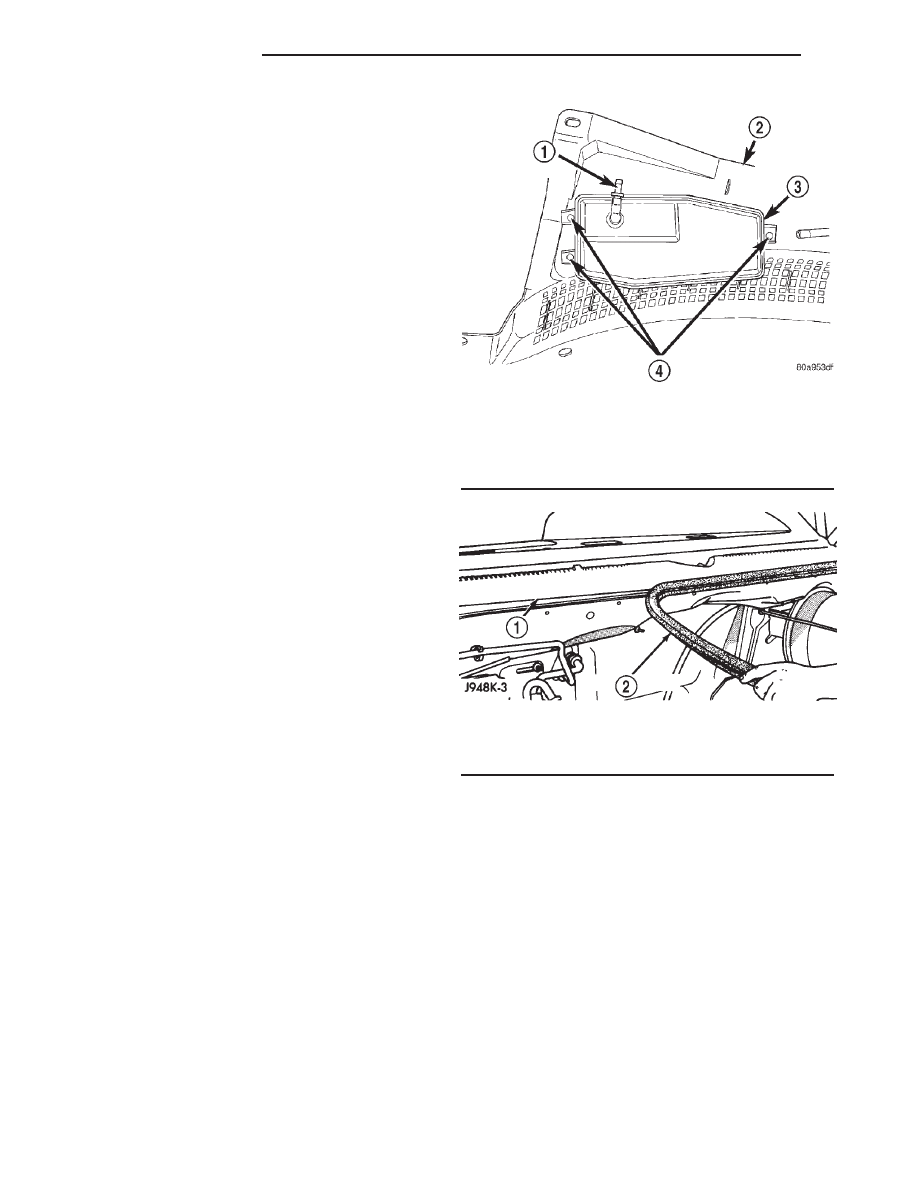Dodge Dakota (R1). Manual - part 356

(3) If vacuum is less than ten inches of mercury,
determine source of leak. Check vacuum line to
engine for leaks. Also check actual engine intake
manifold vacuum. If manifold vacuum does not meet
this requirement, check for poor engine performance
and repair as necessary.
(4) If vacuum line to engine is not leaking, check
for leak at vacuum reservoir. To locate and gain
access to reservoir, refer to Vacuum Reservoir Remov-
al/Installation in this group. Disconnect vacuum line
at reservoir and connect a hand-operated vacuum
pump to reservoir fitting. Apply vacuum. Reservoir
vacuum should not bleed off. If vacuum is being lost,
replace reservoir.
(5) Verify operation of one-way check valve and
check it for leaks.
(a) Locate one-way check valve. The valve is
located in vacuum line between vacuum reservoir
and engine vacuum source. Disconnect vacuum
hoses (lines) at each end of valve.
(b) Connect a hand-operated vacuum pump to
reservoir end of check valve. Apply vacuum. Vac-
uum should not bleed off. If vacuum is being lost,
replace one-way check valve.
(c) Connect a hand-operated vacuum pump to
vacuum source end of check valve. Apply vacuum.
Vacuum should flow through valve. If vacuum is
not flowing, replace one-way check valve. Seal the
fitting at opposite end of valve with a finger and
apply vacuum. If vacuum will not hold, diaphragm
within check valve has ruptured. Replace valve.
REMOVAL
The vacuum reservoir is located under the plastic
cowl plenum cover at lower base of windshield (Fig.
9) or (Fig. 11).
(1) Disconnect and isolate negative battery at
cable.
(2) Remove
both
windshield
wiper
arm/blade
assemblies. Refer to 8, Wiper and Washer Systems.
(3) Remove rubber weather-strip at front edge of
cowl grill (Fig. 10).
(4) Remove four plastic nuts securing cowl plenum
cover/grille panel to studs on cowl top panel near
base of windshield (Fig. 11).
(5) Remove two plastic rivets securing each side of
the cowl plenum cover/grille panel to cowl plenum
panel and cowl top panel.
(6) Lift cowl plenum cover/grille panel from vehicle
far enough to access windshield washer and vacuum
plumbing near right end of cowl plenum.
(7) Disconnect windshield washer supply hose at
in-line connector.
(8) Disconnect vacuum supply hose from vacuum
supply connector at vacuum reservoir (Fig. 9).
(9) Remove cowl plenum cover/grille panel from
vehicle.
(10) Remove three reservoir mounting screws (Fig.
9).
(11) Remove vacuum reservoir from vehicle.
INSTALLATION
The vacuum reservoir is located under the plastic
cowl plenum cover at lower base of windshield (Fig.
9) or (Fig. 11).
(1) Install vacuum reservoir and three mounting
screws to plastic cowl cover. Tighten three screws to
2.2 N·m (20 in. lbs.) torque.
(2) Position cowl plenum cover/grille panel to vehi-
cle.
(3) Connect vacuum supply hose to vacuum reser-
voir.
Fig. 9 Vacuum Reservoir Mounting
1 - VACUUM SUPPLY CONNECTOR
2 - COWL PLENUM COVER/GRILLE PANEL
3 - VACUUM RESERVOIR
4 - SCREWS
Fig. 10 Cowl Grille Panel Weather-strip
1 - COWL GRILLE
2 - WEATHERSTRIP
8P - 8
SPEED CONTROL
AN
VACUUM RESERVOIR (Continued)